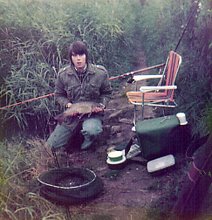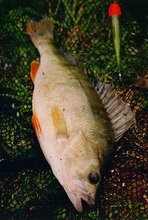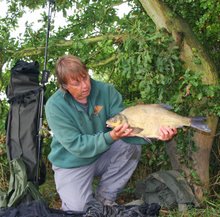Why more people don’t make their own bread, I really don’t know. Can there ever be a better smell to pervade the house than that of fresh bread cooking? Even Estate Agents advocate baking bread and percolating coffee to enhance the ambience of a family home. Walking in through our back door when bread is baking – even though I know that the oven is on and the dough is in – is still as wonderful as it was the first time I ever made bread.
It seemed to me initially, that bread making was akin to alchemy – the purview of magicians, a world of wizardry – and that skills beyond my capability were necessary for the production of such a staff of life. I used to stand at bakers’ windows enviously eying the doughy delights of the bakers’ bounty (ok enough alliteration!) but I always chose the white bloomer, never being sufficiently brave to experiment with artisan wholemeal, six seed, granary or rye. It was only when the different types of grain had been explained to me that I began to try alternative loaves and an interest in baking my own was born.
Like many, I started with a Bread Machine, but unlike most I stayed with it because of a book my wife bought me which explained, not only the basic mechanics of the equipment but also the elementary alchemy behind the operation. This book also clarified the order in which the ingredients should be placed into the bucket and why. However, before the book was gifted I dabbled with the complete bread mixes that can be purchased at any supermarket and for a while had some great results, this kept me happy for a few months, especially as there were many different types of bread that could be made.
 |
| A bread-machine loaf |
But I still thought I was missing out on something, a part of the overall magic was not yet present it was like going to Art College and doing painting by numbers - I neede to do more. That was when Frankie bought me the book – The Complete Bread Machine Cookbook by Sonia Allison – and I started to buy my own ingredients.
Of course, only three ingredients are needed for bread making – four if you include water - which brings me very neatly to another reason why I wanted to make my own loaves. The question occurred to me why bought bread contains so many ingredients and why the sell by date can be anything up to two weeks in the future. I understand the correlation between the two – that the ancillary additions increase the life of the loaf – what I don’t understand is our appetite for an unhealthy substitute for a hearty food, or our desire for a longer shelf life when bread is a relatively cheap commodity in the first place. Our propensity in this country to change the basic elements of our diet because it’s not cheap enough, pretty enough, long-lasting enough or sufficiently easy to cook is quite alarming.
I notice that a bagged loaf can be purchased in a supermarket chain for 40 pence and that it comes with a 10 day use by date, but healthier bread can be bought for £1 with a 5 day use by date. I think I’d rather pay an additional 60 pence for good health but perhaps I am simplifying the issue over much.
Be that as it may, I calculate that I can make a 500g loaf for as little as 36p should I wish to, so the price issue is pretty much eradicated. It takes a little of my time and I have the cost of the oven to factor in but they are mitigated by the enjoyment and the lovely smell in our cottage.
As for the use by date - well, we eat the bread as fresh as we can for up to 48 hours but by then it’s pretty much toast – literally. After that it’s bird food, and that’s it. Then I make another loaf. Simples.
So how to make your own loaf:
Take 500grams of Strong White bread flour and using you fingers mix in one packet (7g) of fast action dried yeast and one level teaspoon of fine salt. Make a well in the middle of the mix and gradually stir in, with a fork, between 300 and 400 mils of warm water. Using your hands blend the lot together and turn out onto a clean surface – you don’t need extra flour – just a clean work top. Touching the dough as little as possible with your fingers, stretch it with the heel of your hand, turn, pull back together and stretch again. It quickly becomes less sticky, and even if it’s too wet initially, it will smooth out into a soft malleable ball – just keep it moving. Remember you’re trying to stretch the gluten. After 10 minutes or so it should be quite stretchy and bouncy. Oil a bowl and put the rounded ball of dough into it, cover with a cloth and put it in a warmish spot. Leave it for an hour or two.
When it has doubled in size, pull the dough from the bowl and gently, with your finger tips, push it into the worktop for a minute and then bring it back into a rounded ball, curving it under itself with the sides of your hands. Flour a baking tray – I actually use a tray with baking parchment on top and flour that. Place your dough on top and put your cloth back on top while your oven heats up to its hottest temperature. When it has done so – turn it down to 190 and put the tray with the dough into the middle of the oven and bake for 20 – 25 minutes or until it sounds hollow when you tap the bottom.
 |
| A plaited loaf and some rolls for the freezer - all from the 500gram dough mix |
That’s less than 300 words to bake your own bread. You need about 2 1/2 hours or so of your time, but you’re only actually doing something for 15 minutes of that time. I actually don’t need any more than 6 words to teach you how to make bread – Look It Up On You Tube – that will give you all you need to produce a delicious edible loaf – it may even inspire you further. Perhaps to experiment with different flours or to make rolls, pizza, nan bread or chapattis – the sky is the limit.
Give it a go.








